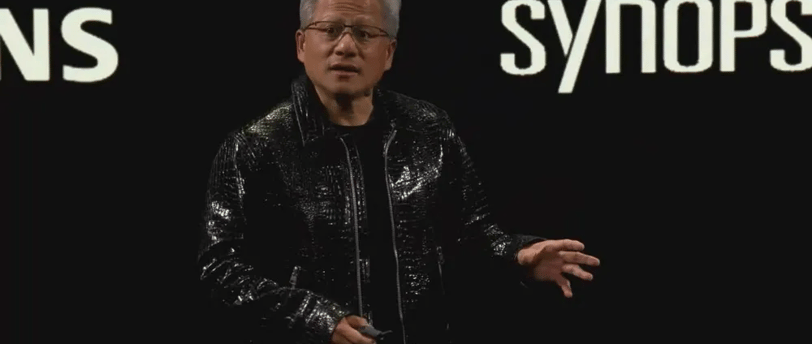NVIDIA CES 2025 Keynote: Transforming the Future of AI, GPUs, and Robotics
Blog post description.
Cliffinkent
1/8/20252 min read


NVIDIA CES 2025 Keynote: Transforming the Future of AI, GPUs, and Robotics
The Consumer Electronics Show (CES) 2025 marked a pivotal moment for NVIDIA as CEO Jensen Huang unveiled groundbreaking advancements in artificial intelligence, GPU architecture, and robotics. From the introduction of the Blackwell GPU family to the debut of the NVIDIA Cosmos platform, the keynote set the stage for the next era of computing. Here are the highlights from NVIDIA's CES 2025 keynote:
1. The Power of Tokens: The Foundation of AI
Huang opened the keynote by emphasizing the transformative potential of tokens—the building blocks of AI. Tokens are the core mechanism behind how AI perceives, generates, and reasons. They power applications ranging from image synthesis to robotics, illustrating AI's role in making the physical and digital worlds increasingly intelligent and interconnected.
2. Blackwell Architecture and the GeForce RTX 50 Series
NVIDIA unveiled the GeForce RTX 50 Series GPUs, featuring the new Blackwell architecture. These GPUs are a leap forward in performance and efficiency:
Performance Boost: The RTX 5070 offers RTX 4090-level performance at $549, while the flagship RTX 5090 boasts twice the power of the RTX 4090.
Neural Rendering: The GPUs integrate advanced neural rendering capabilities, powered by DLSS 4, which predicts and generates pixels to enhance image quality and performance.
Energy Efficiency: Blackwell architecture delivers significant improvements in performance per watt, making high-quality computing more accessible.
The RTX 50 Series is designed not only for gamers but also for creators and AI enthusiasts, with laptops starting at $1,299 available in March 2025.
3. NVIDIA Cosmos: The First World Foundation Model
Huang introduced NVIDIA Cosmos, a revolutionary platform designed to advance physical AI. Cosmos bridges the gap between real-world scenarios and AI applications by generating photorealistic, physically accurate simulations. Key features include:
Synthetic Data Generation: Developers can create diverse scenarios to train robots and autonomous systems.
Reinforcement Learning: Cosmos supports policy model development for robotics and autonomous vehicles.
Open Licensing: Available on GitHub, Cosmos encourages collaboration and innovation across industries.
4. Agentic AI: AI Agents for Every Industry
Agentic AI, a new frontier in AI development, enables systems that perceive, reason, and act. NVIDIA introduced tools to support this:
NVIDIA Nemo: A framework for creating domain-specific AI agents tailored to enterprise needs.
Llama Neotron Models: Fine-tuned language models optimized for enterprise applications.
Blueprints: Open-source resources for building AI agents that enhance workflows across industries.
5. Advancing Autonomous Vehicles
NVIDIA announced key partnerships with automotive leaders like Toyota to bring advanced autonomous vehicles to market. The new Thor robotics computer, with 20 times the performance of its predecessor, supports the most demanding AV workloads. NVIDIA's Omniverse and Cosmos platforms enable massive synthetic data generation to train and validate AV systems.
6. Robotics Revolution: Isaac Groot Platform
The keynote also spotlighted the NVIDIA Isaac Groot platform, aimed at accelerating general-purpose robotics development. This platform includes:
Synthetic Motion Generation: Creating vast datasets from minimal demonstrations.
Simulation Frameworks: Enabling robots to practice and refine skills in virtual environments.
Scalable Data Pipelines: Accelerated by NVIDIA’s CUDA technology.
7. Project DIGITS: AI for Everyone
To democratize access to AI, NVIDIA revealed Project DIGITS—a compact AI supercomputer. Featuring NVIDIA’s latest Grace Blackwell chip, this desktop-sized powerhouse delivers cutting-edge AI capabilities to researchers, startups, and creators worldwide.
The Future of Computing
NVIDIA’s CES 2025 keynote showcased the company’s commitment to reshaping industries with AI, robotics, and advanced GPU technology. From enabling smarter cities to revolutionizing entertainment and scientific discovery, NVIDIA is at the forefront of a rapidly evolving technological landscape.
What part of NVIDIA’s vision for the future excites you the most? Share your thoughts below!